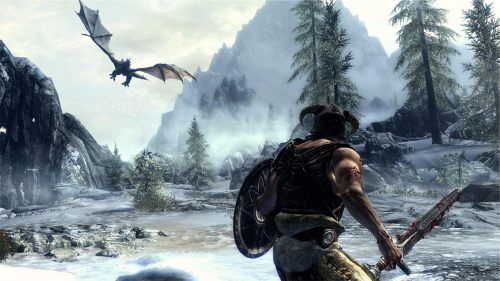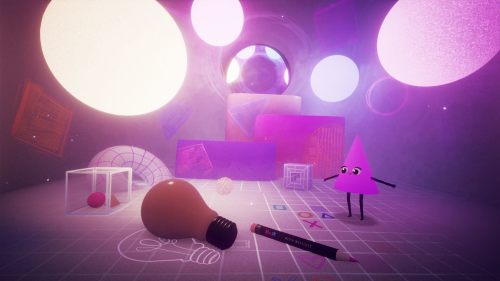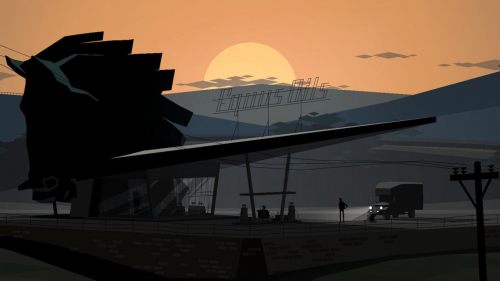GRAVITY RUSH 2 Game Review: Falling With Style
Look: I hated most of what Gravity Rush 2 told me to do. I rage-quit many times. Some of its missions are among the worst I’ve played in ages. But when it’s not making you do repetitive, infuriating, borderline insulting tasks, Gravity Rush 2 exhibits a killer central movement mechanic and a silly charm that, while they can’t save the game entirely, make up for a lot.
So killer is Gravity Rush 2's movement mechanic (and that of its PS Vita predecessor) that I was willing to overlook an anime art style that usually turns me the hell off. The game's protagonist Kat has the ability to alter gravity around her, thanks to a magical space-cat called Dusty that follows her everywhere (yet, bafflingly, cannot be patted). Kat essentially gains the power of flight - only technically, she's just falling in different directions. Land on the side of a building, and she can walk and jump on it as normal (up until the generous gravity meter is exhausted). Press the left bumper, and all comes back to Earth.
Gravity shifting is fantastic, comparable to other unique movement systems like Just Cause 3's wingsuit or Titanfall's array of gettin’-about gadgets. Once over the initial learning curve, one can execute dazzling, acrobatic displays, leaping between buildings, sliding up sheer walls, and soaring above rooftops, before dropping to a hover just above the ground, all with gorgeous, graceful character animation. As the game progresses, it introduces new flavours of gravity manipulation, like the fast, unwieldy, and powerful Jupiter Style or the floaty, bouncy Lunar Style. For what it's worth, Lunar Style is the closest any game has come to replicating my particular dreams of flying.
Given it’s an open-world title based around a peculiar take on flight, it’s unsurprising Gravity Rush 2 takes place in vast environments. The marketing focuses on the game’s multiple cityscapes, but there’s a surprisingly wide range of environments - some of which are really freaking bizarre. Gravity Rush 2’s world is one built on “gravity engines,” made up of floating Unobtanium islands with cities on top. It’s all very vertical and beautiful, full of flying boats, city squares, hovering mansions, and strange robots. Kat’s surroundings are full of detail, too, on the macro level as well as the micro. Each city has its own social structure, whether districted by purpose or segregated by class. Some areas are densely populated, too, resulting in the amusing unintentional deaths of those who get caught in Kat's gravity field. Kat’s Man of Steeling all over this show.
I can’t speak for players of the original Gravity Rush, but I have to hope that the sequel’s story makes more sense for them than it did for me. In time-honoured Japanese storytelling tradition, Gravity Rush 2 frequently borders on the incomprehensible. Ten minutes in, I was completely lost, a state which saw only minor fluctuations throughout the runtime. Cutscenes play out as comic book panels, with most of the story is conveyed solely through text, with actual animation reserved for more spectacular moments. I found myself crying out, “who the fuck is that?!” on too many occasions.
I’ll give the story this, though: it’s ambitious. Kat starts out on a mining ship operating as a sort of indentured servant, part of a system that keeps the wealthy in power and shits on the poor. There’s a surprising amount of nitty-gritty political content in here, ranging from blunt metaphor (the underclasses reside in crappy ramshackle settlements below the clouds, while the rich sprawl out on vast estates above them) to governmental corruption, only just stopping short of becoming a parliamentary procedural at times. That’s not to say it’s stuffy, exactly, either: before it’s over, the story touches on mind control, rifts in spacetime, giant war mechs, island-eating rubble monsters, time manipulation, supervillains, and alternate dimensions. So far, so anime.
Gravity Rush 2’s pacing is bizarre. The stakes routinely flip between world-threateningly intense and walk-in-the-park casual. Like most open-world games, the story will give you an urgent instruction, only for your enthusiastic avatar to ignore it in favour of miscellaneous open-world activities. Worst of all, the game reaches a crazy, over-the-top climax mid-way through, only to drop Kat into an new city, with an entirely new story and set of characters to deal with. It’s a dispiriting feeling, like reaching the crest of a hill only to discover you’re less than halfway to your destination. The princess is in another castle, and it’s a bummer.
Mission design suffers from a different problem: repetition. Most missions are imbecilic and irritating, and somehow, despite their simplistic nature, many feature unclear mission objectives, thanks to poorly-written text that I put down to bad localisation. Combat is a single-button affair, based around hitting big glowing weak spots on increasingly enormous enemies (or throwing things at them, using Kat’s overpowered gravity-well abilities). Interior sequences are exercises in anger management, with terrible camera controls getting in the way of nearly any action. Seemingly endless challenge levels are scattered throughout the game, with the same challenges barely remixed for new locations. And the ridiculous stealth sequences - taking place in situations where Kat could simply fly over obstacles - grind the action to a halt. Traditional stealth gameplay just doesn’t gel with the gravity mechanics - it’s like hopping on a horse to hunt sharks.
Gravity Rush 2 also falls victim to the pitfalls of open-world design. Sidequests, though thankfully based around the game’s principal characters, are unsubstantial. Mirror’s Edge-like challenges dot the game world, but are less fun than simply getting around at your own speed. Some features feel thrown in for the sake of it, like the “home” system wherein you can decorate Kat’s abode - a drainage pipe - for no apparent reason. There’s a camera mode, where you can pose Kat for pictures and do camera-specific missions, like helping an old man take pictures of pretty young girls. Yep - it’s anime, alright.
I wanted to love Gravity Rush 2, and if it were structured better, I might have. Its surprisingly class-conscious story adds substance to a game that would have been fine with just the gravity manipulation. And it’s got undeniable charm and enthusiasm that action games often lack. But is that enough to overcome a nonsensical story, insipid characterisation, moronic mission design, and a bad case of open-world bloat? This is one of the few open-world action games where I’d rather just zip around collecting crystals. Like Buzz Lightyear, Kat’s adventure has style, but ultimately it’s still just falling.



